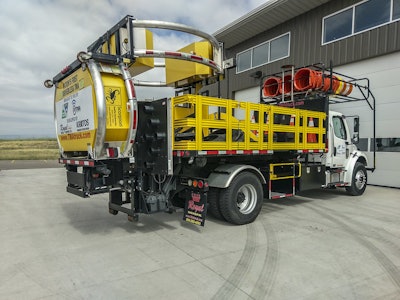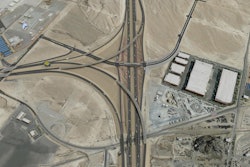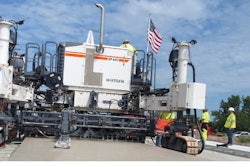 An autonomous attenuator is among the types of innovations a new round of FHWA grants will fund. Photo credit: Colorado Department of Transportation
An autonomous attenuator is among the types of innovations a new round of FHWA grants will fund. Photo credit: Colorado Department of TransportationAccelerated bridge construction, ultra-high-performance concrete and a robotic crash truck are a few of the roadwork innovations some states and local governments will be using this year, thanks to $8 million in federal grants.
The Federal Highway Administration announced the grants for state and local governments in Alabama, Arkansas, Colorado, Florida, Illinois, Iowa, Michigan, Minnesota, New York and North Dakota.
Here’s a breakdown of how the money will be used:
- The Alabama Department of Transportation and Baldwin County will employ accelerated bridge construction and next beam ultra-high-performance concrete retrofit to shorten construction time from 14 weeks to six weeks for bridge retrofit projects. Grant amount: $1 million
- The North Dakota DOT will deploy a robot-driven crash truck known as an “autonomous attenuator” to protect workers from traffic when doing routine maintenance activities. Grant amount: $241,687
- The Arkansas DOT will use 3D modeling and e-construction (paperless) to enhance the use of Global Navigation Satellite System technology in the engineering and construction phases of projects. Grant amount: $313,600
- The Colorado DOT will use Snowplow Signal Priority, which allows prioritized treatment for snowplows at traffic lights, to improve traffic flow during and after snow removal. Grant amount: $800,000
- The Florida DOT will improve traffic signalization at intersections in Orlando as part of a larger project to intelligently manage transportation flows around downtown. Grant amount: $998,216
- The Illinois DOT will use compacted concrete pavement to improve the surface of Hollow Avenue in Jerseyville. Compacted concrete pavement has a surface finish like standard concrete pavement, according to the International Society for Concrete Pavements. The concrete differs from roller compacted concrete in that it uses a high-density asphalt-type paver rather than a standard paver. The tamper screed on the high-density paver compacts the surface so you don’t have to perform roller compaction. Grant amount: $1 million
- The Iowa Department of Transportation and the city of Dubuque are developing a smart, next-generation traffic management and control system that will ultimately link 11 corridors and allow them to act as one integrated system. Grant amount: $998,000
- The Michigan DOT will employ accelerated bridge construction and Prefabricated Bridge Elements and Systems (PBES) to reduce delays caused by traffic during construction of the 2ndAvenue Network Arch Superstructure project. Grant amount: $1 million
- The Minnesota DOT will use this grant for an innovative road project to improve safety, mobility and access for drivers and bicyclists along Broadway Avenue in the city of Winona. Grant amount: $1 million
- The New York State Department of Transportation will use its grant to improve traffic incident management on a regionwide basis. Grant amount: $740,000











